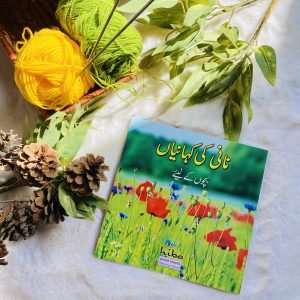Farah Najam guides us through the tourist attractions of Morocco – a country offering a plenty for an enjoyable experience
Morocco is one of Africa’s most popular travel destinations. No matter how well-seasoned a traveler you are, you’ll find plenty to see and do. Fine Atlantic and Mediterranean beaches, desert excursions, wondrous imperial cities, Islamic landmarks, Roman antiquities, resort facilities, mountain villages, oases, and towering sand dunes are just some of the wonders you can expect to find in Morocco.
Casablanca
Tourists coming to Casablanca expect to find a romantic town, as depicted in the classic film of the same name. The biggest must-see of Casablanca is the new Hassan II Mosque. Place Mohammed V, also known as Place des Nations Unies, this square in the centre of Casablanca is one of the nicest examples of French colonial architecture.
Casablanca was founded by the Portuguese as Casa Branca. It was never a very important town, until the French came to Morocco in the beginning of the 20th century. They started to develop the axis Rabat (their capital) – Casablanca – at a high speed, which gave Casablanca its position as the economic powerhouse of Morocco.
Agadir
Built next to a site of the tragic earthquake of 1961 that killed 15,000, it exhibits a totally different city culture and architecture from the rest of the country. So it is no wonder that especially for tourists the streets have been made wide and straight, houses are low and hotels have been constructed between the city and the beach. For many visitors, it is a functional, open, and beautiful change from the more typical cities.
The fish market of Agadir has been turned into the surprise tourist attraction. Agadir is truly an important fish city, serving both African and European markets.
Marrakesh
We are bewitched by the spell of the place and its people, folk artists to their very souls, who have only one aim in view – to make a stay in their city as entrancing an experience as possible. With its world-famous square, Jamaâ El Fna, the beacon city of the Almoravids was founded in about 1070.
The first Almohad sovereign, Abdelmoumen, began the construction of the Koutoubia mosque. The Badi Palace has long been regarded as a wonder of the Muslim world.
Other marvels to be found in the Red City are the Dar Si Said museum, containing much quintessential Moroccan art and displaying a glittering array of gold and marble ornaments.
Novelties of Morocco
Camel trekking
You can discover the Waddi and the Desert on the back of a dromedary (the faster one- humped brother of the two humped camel), while spending the evenings camped out under the ‘hotel of 1000 stars.’ The sunrise is a mystical experience. You can rent a helicopter from Marrakesh or spend your days following the ancient trade routes on the back of a camel.
Carpet shopping
Buying a Moroccan carpet can be a pleasurable shopping experience. Offer the seller a little less than what you’re willing to pay as your opening counteroffer to his first price. Once you enter into negotiations, you can walk away at any time, but if you agree on a price, then you’ll have to buy (walking away after accepting a price is against the rules).
Jewellery
The art of making silver jewellery is a very ancient Moroccan tradition. The silver jewellery comes in many shapes and sizes, such as Berber Bedouin bracelets, earrings, anklets, and necklaces. Among the most popular are heavy solid silver bracelets with deeply-etched designs, which originate from the tradition of carpet making, where the extra weight of the bangle would help accelerate the hand holding the shuttle over the loom.
Leather
Leather ware has been a highly prized trade item since the 16th century. Thousands of different types of leather are available, found stretched out on the straw to dry in the sun. Leather is used to make handbags, travel bags, and satchels to mention but a few of the uses. These will be styled by the leather workers with gold-leafed designs and other colors to produce Arabic and geometric designs.
Metal framed lamps are traditionally covered with leather before being hand painted to produce an original lighting effect for your house.
Olive oil from Djemaa El Fna
Morocco has an ideal climate for the olive tree. Surrounding the walled city of Marrakesh, the olive trees give shade to the sun baked ground. Marrakesh and the Djemaa El Fna Place is where you should buy your olives. Olives are ready to be served with every meal, either as an appetizer or with your main course.
The Imlil orange stand
Oranges are one of the natural products in Morocco. Irrigation is always a problem in the arid environment to swell the fruit. As you drive through the production areas in the valleys surrounding Marrakesh, check out the length of the sprinklers.
Wood carving in Essaouria
Wood carving is a product that you will come across throughout Morocco. But on the Atlantic coast, the Moroccan town of Essaouria is the centre of craftsmen, shaping everything from tissue paper holders to elegant tables and desks. Here the craftsmanship is on another level – the beautiful mix of the sweet smelling dark brown oil, which is used to protect the carving, and the fine workmanship will give you a present that you must take back home.



